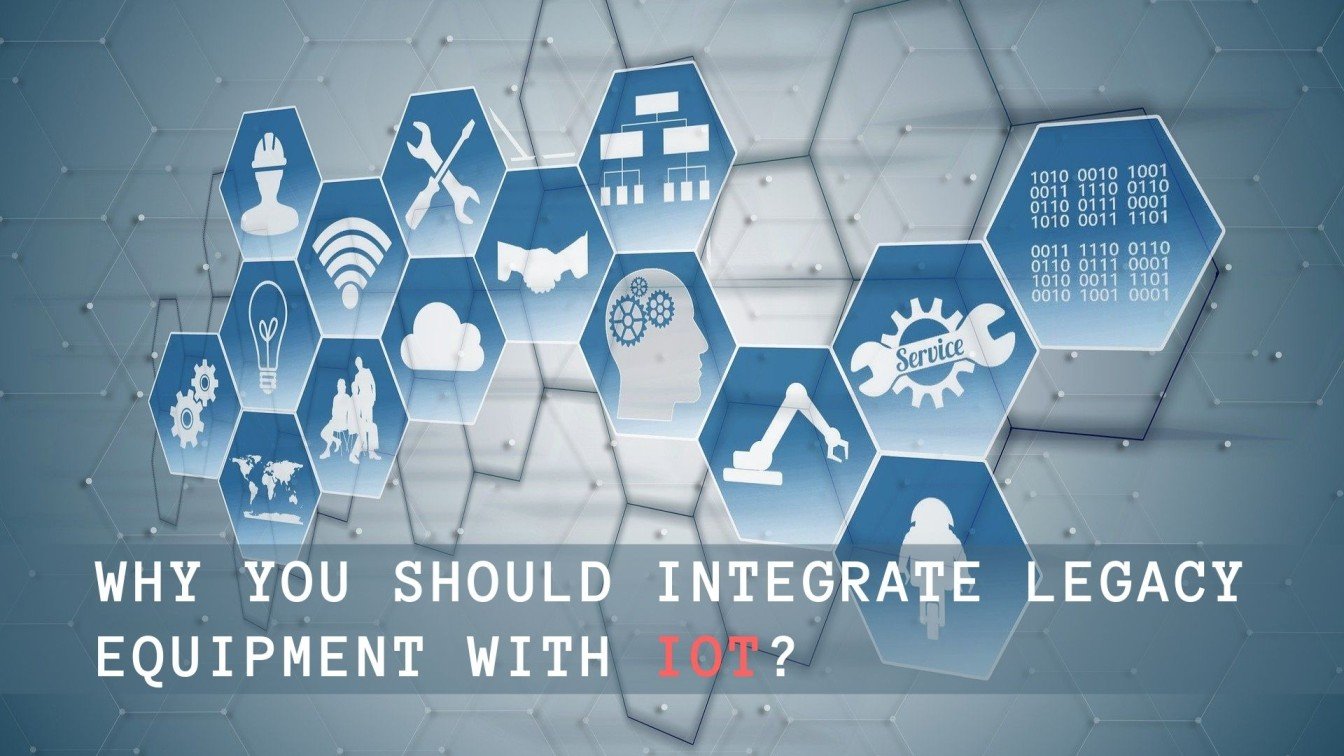Why You Should Integrate Legacy Equipment With IoT?
- 1 What is the Industrial Internet of Things, and how does it work?
- 2 Options for Connecting your Factory Floor
- 2.1 Retrofitting IIoT Connectivity
- 2.2 Making Use of Video Cameras
- 2.3 Using Devices on the Periphery.
- 2.4 Biometric Devices
- 3 The Advantages of a Connected Manufacturing Floor
- 4 What You Should Think About Before Upgrading
There are several reasons why legacy equipment should be brought into the Industrial Internet of Things (IoT). The majority of manufacturers deal with older machinery. According to a recent McKinsey study, industrial machinery and tools are on average 11 years old. Industrial equipment is built to last; we even use the word “industrial strength” to describe products that have higher-than-average durability and power, from insect spray to boots. When something is still working–and doing well–upgrading to something new can be difficult to justify.
However, many of these older legacy systems were built before the era of networked industrial systems, which provide a variety of additional advantages. Higher productivity, increased flexibility, a safer manufacturing floor, and cheaper costs can all be attributed to a “smart factory.”
Retrofitting connected IoT gateways and data feedback devices is one solution for bridging the gap between a full update and missing out on all of these benefits. However, until recently, such an upgrade was a time-consuming and costly process. But it doesn’t have to be that way anymore, and there are more possibilities.
What is the Industrial Internet of Things, and how does it work?
The Industrial Internet of Things, or IIoT, is the IoT’s industrial counterpart. The use of networked smart sensors increases automation in a traditional plant. Other instruments collaborate with sensors to collect and analyze data. On a networked (Internet) platform, this occurs. The Internet of Things (IoT) promises a slew of appealing benefits, including increased competitiveness, increased profitability, and reduced downtime. However, in order to realize these benefits, firms must create an ecosystem that connects legacy equipment with contemporary assets (that completely rely on internet-based connectivity).
Although the compatibility issue appears to be overwhelming, there are options for integrating legacy machinery with IIoT, according to PTC Product Manager Jeff Bates. The first option, dubbed ‘rip-and-replace,’ comprises removing obsolete equipment and replacing it with new, IoT-enabled hardware.
When evaluating the durability of legacy equipment, many have argued that rip-and-replace is not a viable choice for processing manufacturers. Instead of ruling out legacy equipment, option two,’ retrofit’ or wrap-and-extend,’ proposes employing third-party IoT-ready connectivity solutions (such as gateways) to extend its capabilities.
The third alternative is to develop individualized technical solutions in-house. Regardless of how appealing this sounds, few manufacturers are going to have the necessary financial or professional resources. “Collecting data is one obstacle,” Bates says, “but showing, analyzing, or otherwise turning the data into actionable insight in a timely and meaningful manner is another.” Technicians who are capable of resolving all of these challenges are in short supply.”
Options for Connecting your Factory Floor
There are currently various ways for connecting your older systems to the Internet of Things.
Retrofitting IIoT Connectivity
IoT gateways enable a simple connection that may deliver data in real-time via software, sensors, and industrial-based control systems.
Making Use of Video Cameras
Video analytics allows cameras to automatically distinguish items, people, and issues on their level.
Using Devices on the Periphery.
Local devices can be used to access data. This can help to strengthen security and speed up the processing of data.
Biometric Devices
Through the use of biometric wearables or tags, your employees can become part of your data collection process. This can be used in conjunction with other enhancements.
The Advantages of a Connected Manufacturing Floor
Several variables should be addressed while upgrading your connectivity. The following are some of the benefits of IIoT connectivity:
Improved Quality
Identify and correct quality concerns quickly. Furthermore, determining the cause of quality issues becomes easy.
Increased adaptability
Anticipate demand changes and adjust setups as needed.
Lower Costs
Data provides for more efficient inventory control, procurement, and staffing, resulting in lower costs.
Higher Productivity
Streamlined procedures and workflows are the results of real-time data on equipment and staff performance.
What You Should Think About Before Upgrading
Upgrading your old system with connected IIoT sensors has a lot of advantages. However, planning is essential for a successful shift. Before you begin, consider the following three factors:
Define your objectives.
“Errors using inadequate data are considerably fewer than errors using no data at all,” said Charles Babbage, the inventor of the programmable computer. You may have no experience with IIoT, but you do have a lot of experience with your processes, for example. Begin by determining where you want to see improvements in your key performance metrics.
You can’t achieve a goal that you haven’t established for yourself.
Determine what you don’t understand
What data-related blind spots do you have right now? To find them, talk with your managers and floor supervisors about what they’re having trouble quantifying. Data ranging from throughput and production attainment to machine data that can be utilized to create a more efficient predictive maintenance schedule can be included.
Decide your course of action
You’ll have to choose which sensors or data collection devices to utilize. Then, as needed, expand your network. This may entail the installation of Ethernet drops and connections if you’re starting from scratch. As you create your plans, remember to factor in the time and cost of this.
Summary
It’s easy to fall into the “if it ain’t broke, don’t repair it” approach when faced with a problem like a factory upgrade. However, if your competitors break out of their comfort zones before you, your business will be left behind as they reap the rewards of change.
Many companies supply legacy system parts that are obsolete currently. WOC, for example, keeps a considerable supply of gas turbine control parts and replacement boards on hand. They normally make a significant purchase when manufacturers make components obsolete, and engineering teams begin to design direct replacement boards using newer parts and components. Parts like DS200DTBBG1A, DS200GDPAG1A, and others are in their inventory. You can consider obsolete part suppliers if you are not upgrading.
One thing to remember is that upgrading equipment is always a marathon, not a sprint, regardless of which road you take. If you decide to do it, you’re in it for the long haul. And after it’s completed, all of the hard work, the emotional roller coaster, and the challenging periods should pay off for years to come.


















